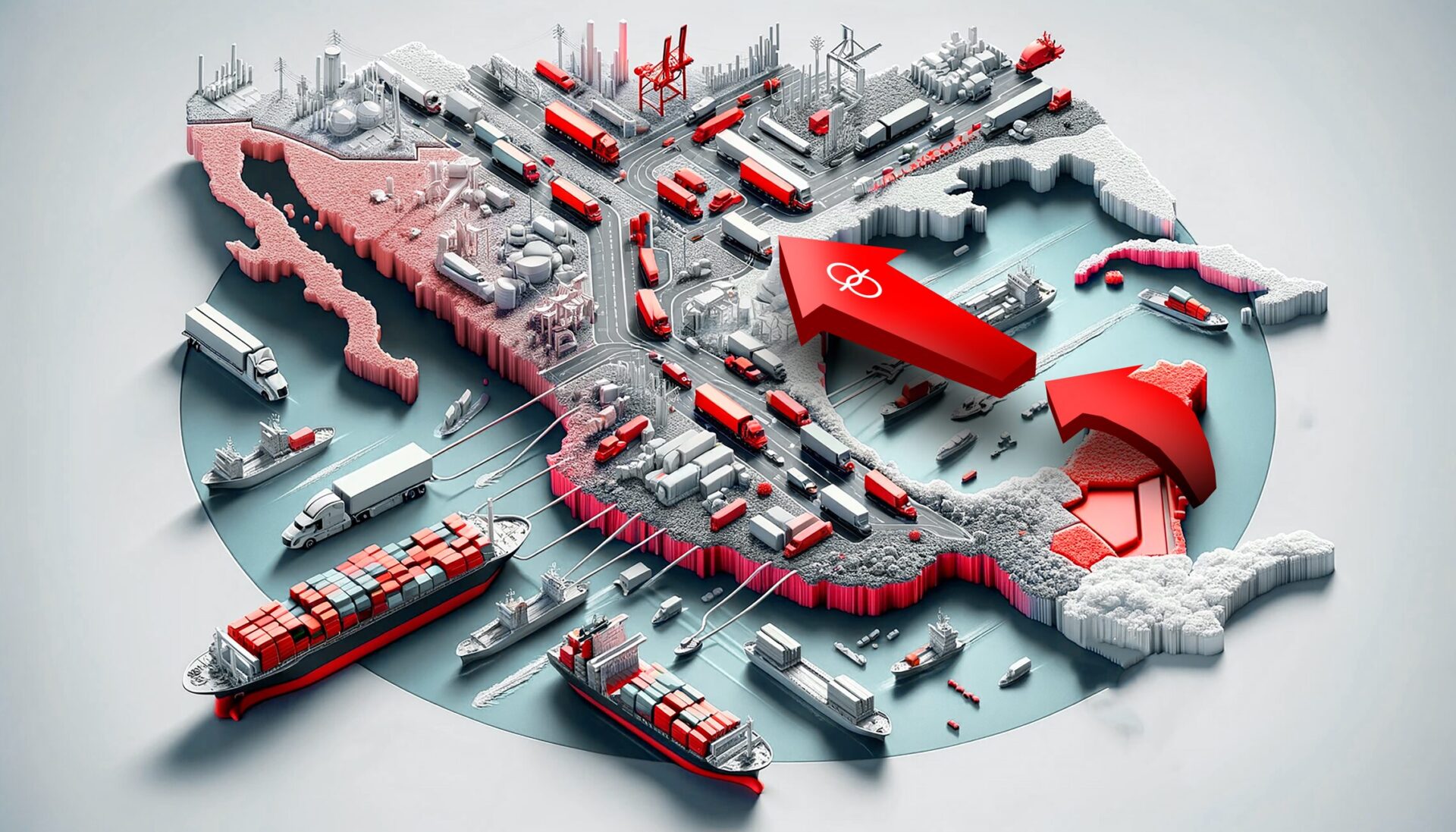Mexico’s Logistics Revolution: From South Mexico to the US East Coast

In recent times, Mexico has been making headlines for its ambitious infrastructure projects that are set to transform the country into a logistics powerhouse. The Mayan Train, a colossal railway connecting the picturesque paradise beaches of Cancun to the ancient civilizations of Palenque in the lost city of Conventia, and the Tulum International Airport, currently under military construction, are at the forefront of this logistics revolution. These developments are not only reshaping the tourism landscape but are also paving the way for Mexico to become a key player in global trade and manufacturing.
Tulum International Airport:
The Tulum International Airport is a beacon of progress, and its construction is breaking records, especially with the military’s swift involvement. Beyond the headlines, there are aspects of this airport that contribute to a larger narrative. With 28 private jet bays, the airport signals a remarkable surge in tourism within the region. The 3.7 km long runway (the longest in Mexico), designed not just for passenger flights but also for cargo transport, emphasizes the strategic importance of Tulum in the logistics domain.
Furthermore, the integration of a Tulum Mayan train station directly connected to the airport is a masterstroke in infrastructure planning. This Mayan train network is poised to link with the interoceanic railway, creating a colossal conveyor belt that spans from the Pacific Ocean to the Gulf of Mexico. Projections indicate that it will surpass the efficiency of the Panama Canal, boasting a capacity to handle a staggering 24 million containers annually. This ambitious connection effectively integrates the Southeast of Mexico into the entire eastern side of the United States, constituting approximately 42% of its GDP.
Logistics as the Driving Force:
The Tulum International Airport and the Mayan Train are not isolated developments; they are integral components of a broader strategy that positions Mexico as a logistics and manufacturing hub. The impressive cargo capabilities of the airport’s runway, coupled with the efficiency of the Mayan train network, create a seamless transportation corridor. This corridor is not only expected to bolster trade within Mexico but also to attract international businesses looking for strategic locations for their operations.
Manufacturing Shift from China to Mexico:
In tandem with these infrastructure developments, there is the Nearshoring movement, a noteworthy trend in the manufacturing sector. Many companies are strategically relocating their operations from China to Mexico. This shift is driven by various factors, including proximity to the lucrative North American market, reduced transportation costs, and a skilled labor force. As a result, Mexico is emerging as an attractive destination for manufacturing, offering a cost-effective and logistically advantageous alternative to traditional manufacturing centers.
Economic Impact:
The synergy between the flourishing tourism industry, efficient logistics facilitated by the new transport networks, and the manufacturing boom positions Mexico as a thriving economic hub. Revenue streams from tourism, logistics, and manufacturing are converging to fuel economic growth. The Southeast of Mexico is becoming a critical player in the global supply chain, creating a ripple effect that benefits the entire region and beyond.
Conclusion
Mexico’s logistical evolution, epitomized by the Mayan Train and Tulum International Airport, is not just a story of infrastructure development; it is a narrative of economic transformation. The efficient transportation networks, coupled with the manufacturing influx, are propelling Mexico into a new era of prosperity. As these projects continue to unfold, Mexico’s role in global logistics is set to expand, making it a key player in shaping the future of trade and commerce. The Mayan Train and Tulum International Airport are not just local projects; they are beacons illuminating the path to Mexico’s ascent as a logistics and economic powerhouse.
